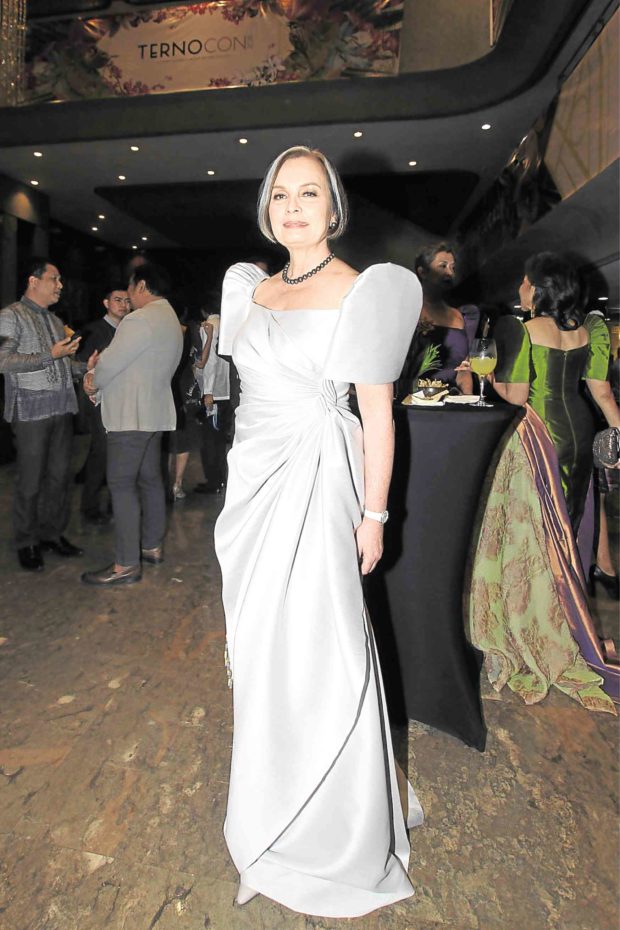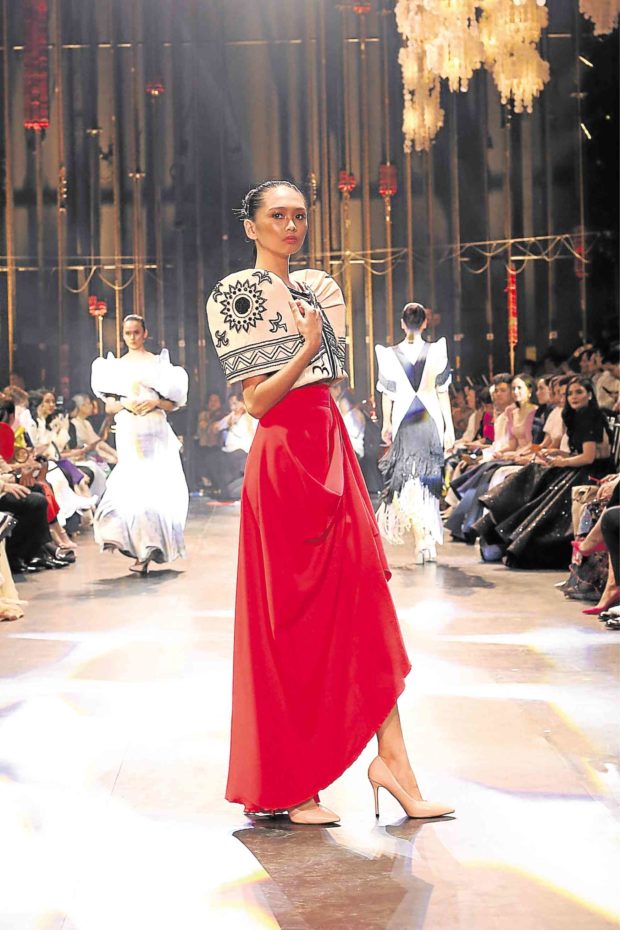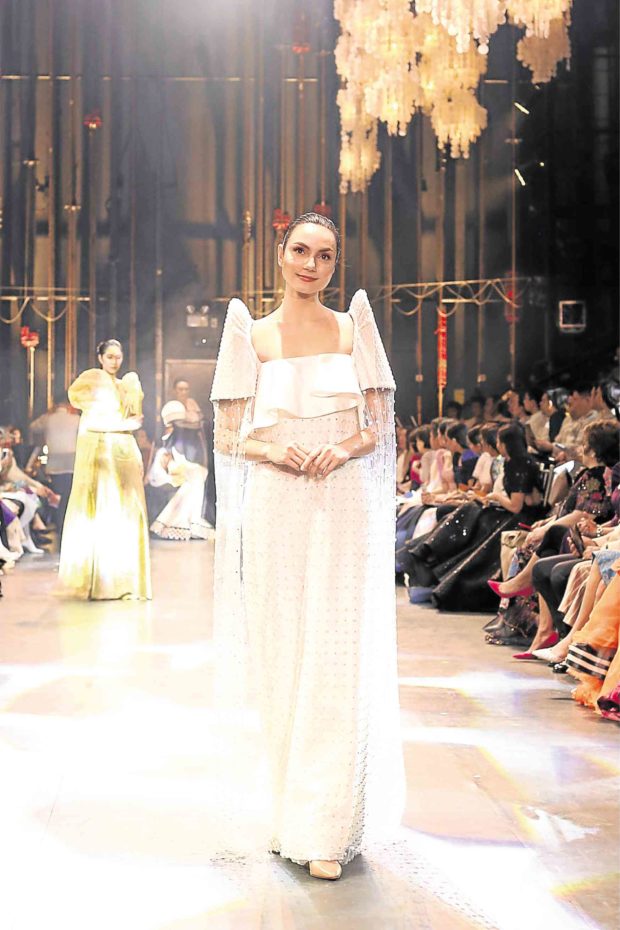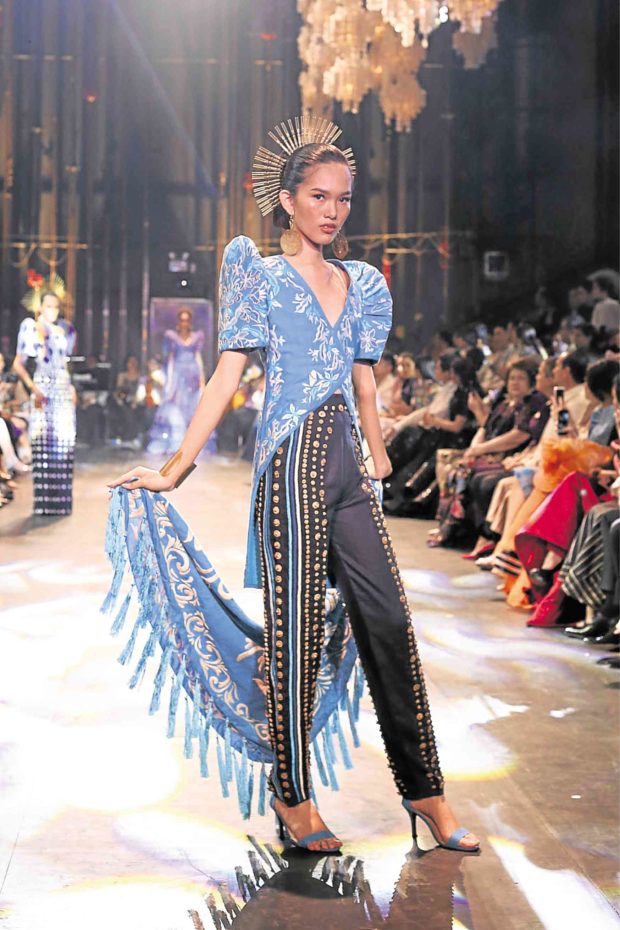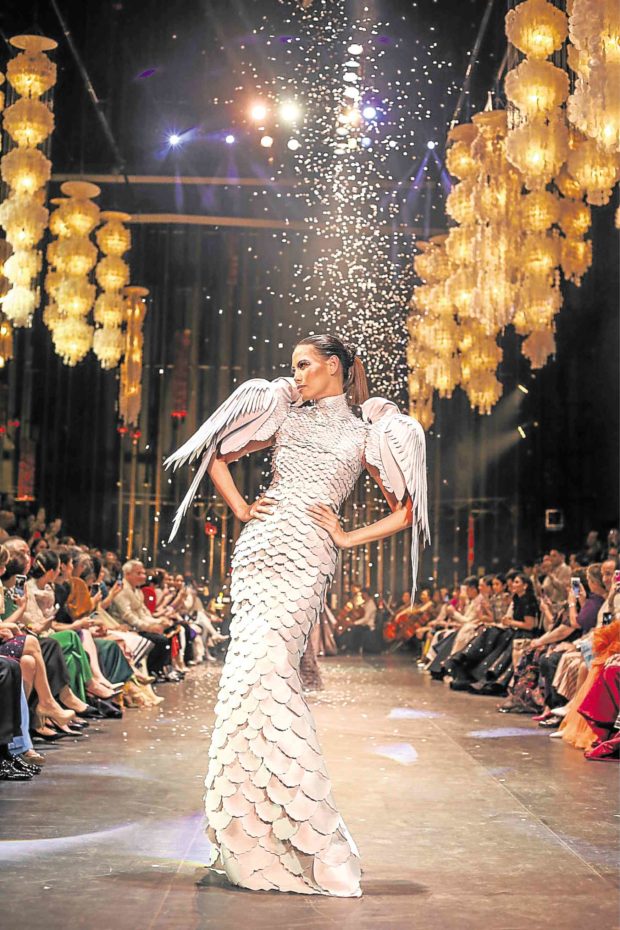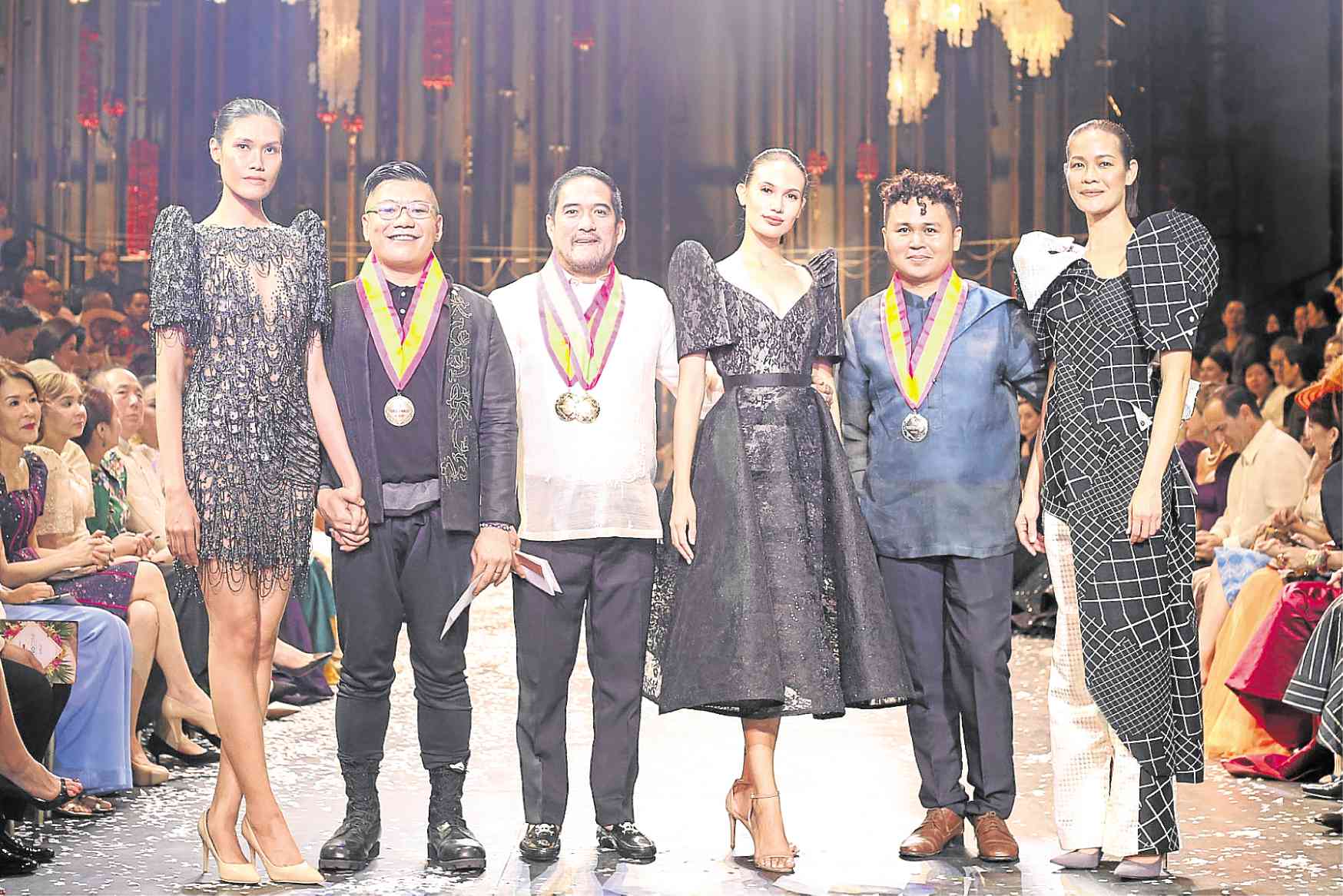
Glamorous, patriotic events such as “Ternocon 2018” on Nov. 11 are striving to make the national dress current and exciting.
Organized by Bench with the Cultural Center of the Philippines to promote Filipino culture, the Ternocon is a terno-making convention and contest, open to designers nationwide.
Headed by scenographer Gino Gonzales, Ternocon aims to educate Filipinos about the terno’s history and correct construction techniques, and to make it resonate with the youth generation.
This year’s edition was a sensorial, emotional experience—the parade of participants, designers, and the performance of folk dances such as the subli by Batangas folk and the Ramon Obusan Dancers, as well as the kundiman sung by members of the Madrigal Singers.
Filipino hors d’oeuvres including kakanin were served at cocktails.
The 28 Ternocon participants came from all over the country—from Ilocos Sur up north to Sarangani down south.
Femininity
Marlon Tuazon from Angeles, Pampanga, won the gold prizes in the balintawak (short terno) and formal terno categories.
Tuazon’s black balintawak emphasized femininity—a striped Mikado silk inner dress bordered with sequins that glittered under the lights. For drama, it had an outer layer of a voluminous double balloon, floral lace skirt with crinoline.
He lauded “Ternocon” for giving the contestants the authentic patterns of the terno sleeves. He added an extra pleat on the Mikado silk butterfly sleeves for body.
His winning terno for formal wear was a white illusion tulle over lace sheath, strewn with white pearls, each of them handsewn.
Tuazon isn’t a newbie. He’s had 20 years in fashion design. He studied fashion design at Cora Doloroso and clothing construction at Golden Hands.
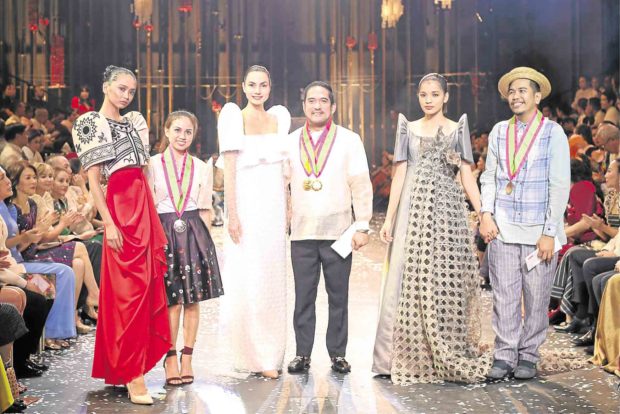
He has dressed up celebrities such as Sarah Geronimo —in a terno for the TV show “ASAP.”
Hungry to improve his craft, Tuazon joined “Ternocon” where mentors JC Buendia, Cary Santiago, Len Cabili and Inno Sotto left a powerful impression. Sotto imparted independent thinking and refined aesthetics.
“Our terno is beautiful. I want to share my new knowledge with younger designers in Pampanga so that everybody will fall in love with it again,” Tuazon said.
Nenita Morden, silver prize winner from Pangasinan, was inspired by the Boxer Codex, a manuscript of illustrations of local ethnic groups in their costumes. Her white gazar terno top was adorned with hand-embroidered and beaded pintado or tribal tattoo patterns. It contrasted with a red crepe skirt with draping.
Morden studied fashion design at De La Salle-College of Saint Benilde (CSB) but had to stop her studies to take care of her baby. Ternocon’s short course allowed her to pursue her craft and to learn from industry experts. She was inspired by Cabili’s prodigious use of ethnic embroidery.
Four months of hand weaving paid off when Michael Joseph Bawar from Bulacan won the bronze. His simple, A-line terno in dove gray, delicately striped organza had a removable tapis or organza overlay of solihiya weave—the intricate weaving pattern used in native furniture. The solihiya was his way of paying homage to Bulacan’s handicraft.
Inventive
Dan Duran from Negros Oriental, second placer in the balintawak category, recalled Thai Queen Sirikit’s influence in fusing the national costume with Parisian couture.
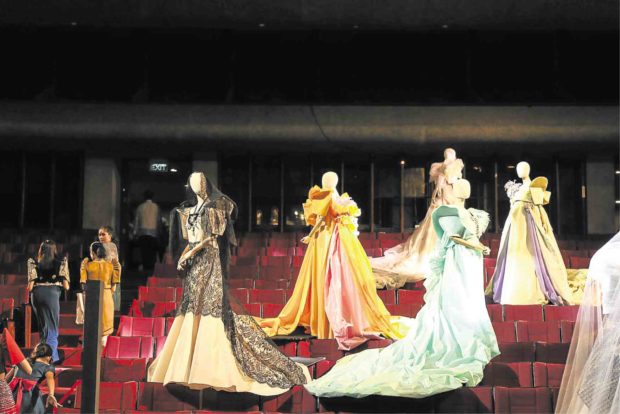
Duran’s concept was that of a fictitious Filipino queen who had a terno made by French couturière Madeleine Vionnet, the genius innovator of the draping.
Duran admired Santiago’s fabric manipulations and inventive pattern-making. From Santiago, Duran learned how to avoid showing the seams. Hence, his black-and-white checkered terno top was a creative display of draping from one fabric the tapis and panuelo.
It was paired with silver houndstooth-pattern trousers with matching checkered prints on the sides.
Duran was a scholar at the School of Fashion and Arts and worked for a fashion house in Dubai. Today he makes custom-made clothes.
Bronze winner Santi Obcena from Quezon City based his balintawak on the Filipino mythical dragon, the bakunawa, that rises from the sea to swallow the moon, causing a lunar eclipse.

It was made of tulle mesh, topped with vintage lace to suggest the dragon’s body. To simulate the droplets of water on the skin, he sewed fringes of acrylic rhinestones and Japanese cut beads.
Obcena studied fashion at CSB and joined Philippine Fashion Week and Project Runway 2010 where he placed second runner-up.
Fresh take
The mentors themselves showed their fresh take on the terno. Sotto mounted an exhibit of high-fashion terno that echoed a romantic past.
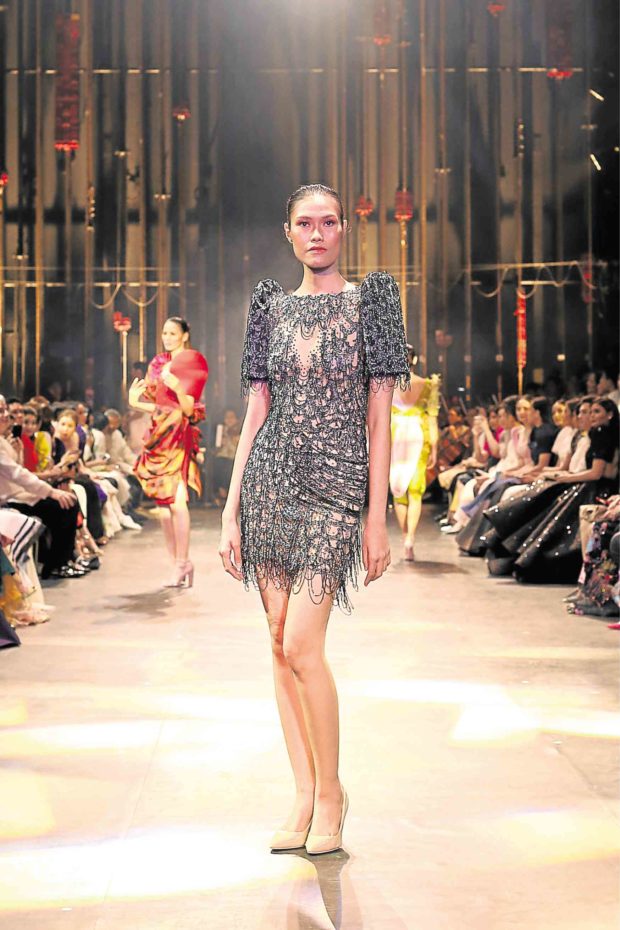
He refashioned the butterfly sleeves into billowy puffs on the upper arms tapering down near the elbow.
The voluminous skirts and dramatic trains gave the illusion of a wearer walking on clouds.
Cabili, known for transforming ethnic fabric and crafts for modern wear, showed terno that mined indigenous crafts—Tausug embroidery, Yakan embossing and beadwork, T’boli embroidery, Bagobo weaves, Aklan filigree embroidery, grosgrain leaf fronds from Bulacan, inabel patterns, Maranao handwork and patterns, Ifugao dye technique and Sarangani beadwork inspired by takmon or mother-of-pearl beadwork.
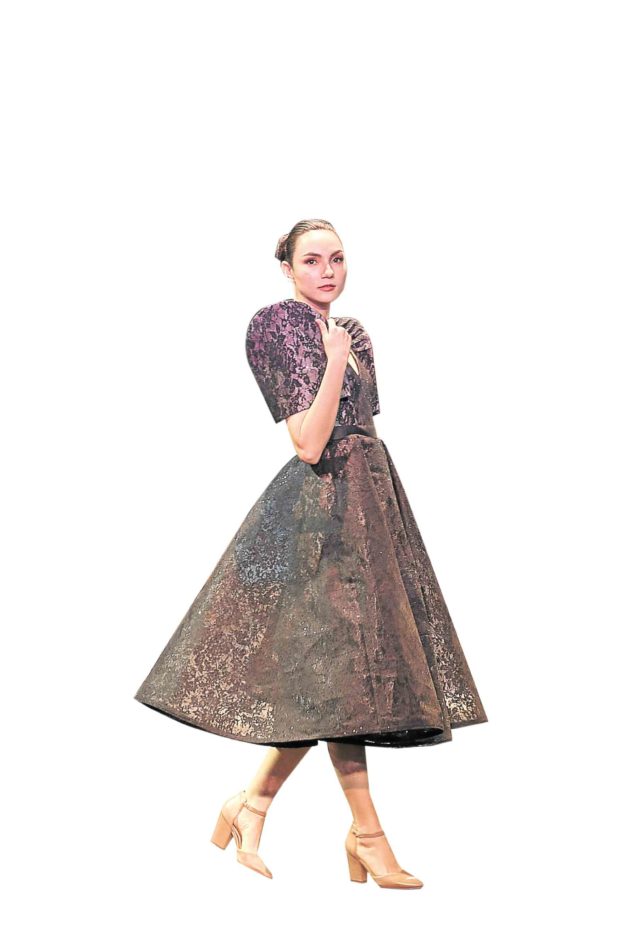
Tweetie Gonzalez modeled a terno with Maranao okir or curlicues, embroidered by Amano Filipinas from Bulacan.
JC Buendia’s contemporary take resonated with young women. He showed cropped terno tops with streamlined butterfly sleeves, paired with pants and skirts, piña, inabel and woven blanket materials. The separates could be mixed and matched, or complement an existing wardrobe.
“It’s something you could wear to the office,” he said.
Santiago has always been fascinated with birds. His terno consisted of individually sewn, folded fabric strips that mimicked feathers. He created them by using origami techniques.
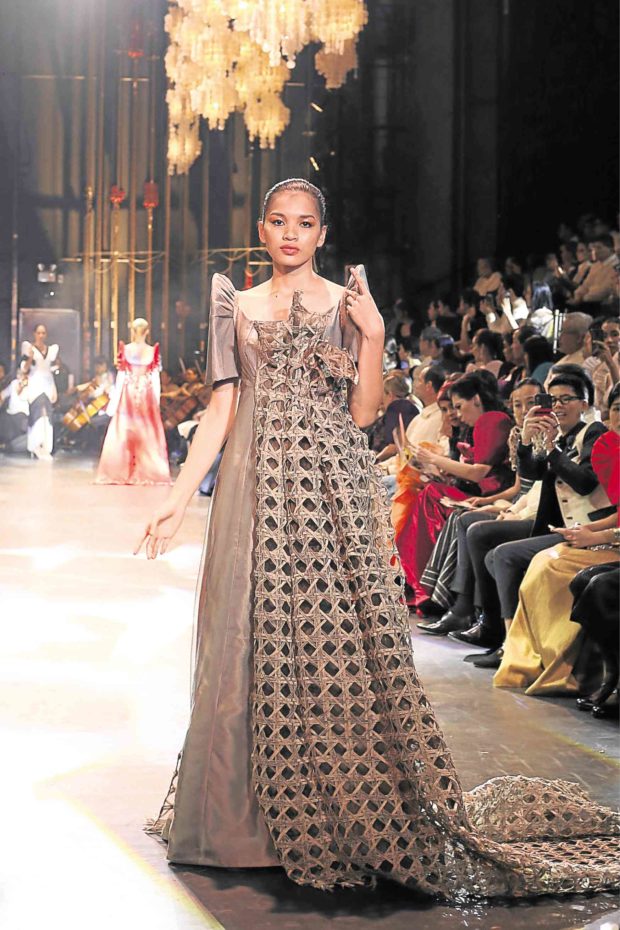
One of the most dramatic pieces was a terno with sleeves that echoed the silhouette of a parrot.
“The proportions must be correct and graceful. If the sleeves were too heavy, they would be humped and look like vultures,” he said. “Even if the feathers are stiff, the wearer feels comfortable enough to move her arms.”
Guests left the CCP with a renewed sense of pride and appreciation of Filipino culture.
Gonzales acknowledged Bench honcho and “Ternocon” head Ben Chan for his support. Chan shouldered the participants’ expenses not only during the convention last May and for the duration of the November program, but also for the consultations with mentors, months before the show.
“The Ternocon is not a one-shot deal. This is Bench’s long-term commitment. Mahal niya ang bansa,” Gonzales said. –CONTRIBUTED
